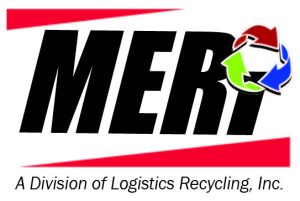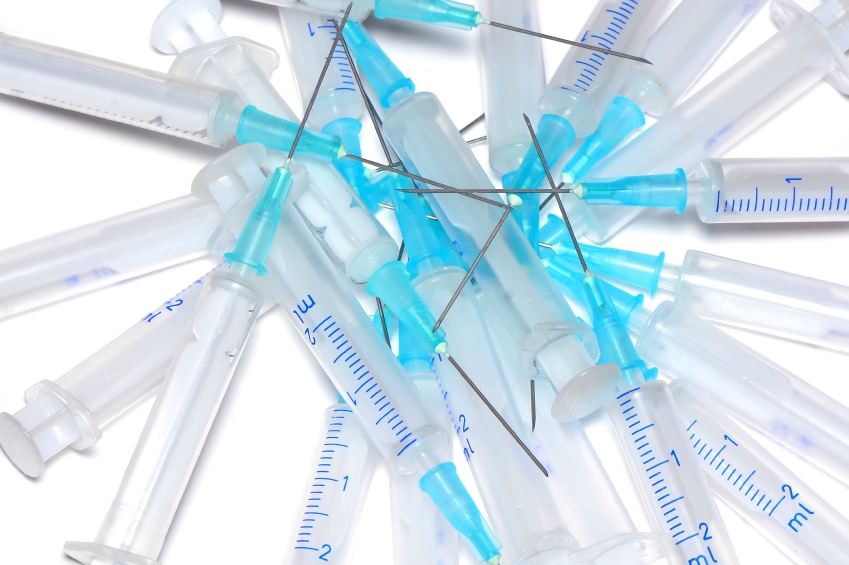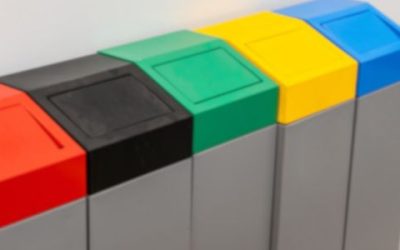Looking information on safer sharps disposal? Many methods currently being used are either exposing people to health hazards or are overly expensive. Here four guidelines will help make your sharps disposal safer and more cost-effective.
As you read through, also keep in mind that there are new programs that let you dispose of sharps for less money and often less work:
1. Use Certified Sharps Containers
Discarding your sharps in uncertified containers, like detergent or milk jugs, puts yourself and anyone who handles your waste at risk. These containers are not thick enough to prevent needles or other sharp objects from poking through. This can potentially infect whoever collects and disposes the waste.
To remain compliant and safe, always dispose of sharps in a certified sharps container. These containers are approved to prevent needles from poking through. Also, it decreases possible health hazards.
There are many different options available for sharps containers. They run from as small as a quart or as large as two gallons. Choose the right container for your environment that will ensure safety and security.
Want a higher level of security? If you want to ensure your disposed sharps are safe from theft, children or any other security/safety threat, you may want to invest in a SharpGuard storage box.
These containers are made of rigid plastic and securely lock to prevent theft. They are available as either a 1 quart or 5 quart container. They are the ideal sharps storage unit for restrooms in gas stations, police stations, office buildings, manufacturing plants and more.
2. Keep sharps containers in a safe location
Another important way to ensure the safety of your sharps is to store collection containers in a safe location or secure them with a locking device such as MERI’s SharpGuard storage box.
If possible, keep it in an area where someone can constantly monitor it, for instance in the nurse’s office at a school. If nobody is available to monitor the container, the best way to keep it safe is again with a SharpGuard secure storage box.
3. Use the MWRS sharps disposal program
This is a great way to discard small amounts of sharps compliantly and inexpensively.
MWRS kits are certified sharps and infectious medical waste collection containers that meet DOT and USPS shipping requirements. Once the container is full, you can ship it to a waste disposal company, who will alert you when they receive it (for manifestation purposes). Here’s a list of what is included with each kit:
- Collection container
- Packing boxes
- Prepaid return shipping label
- Simple to follow instruction sheet
- Manifest to document proper treatment and disposal
Besides being convenient, they are also less expensive than going through a medical waste disposal service. The kits, including shipping costs, run at roughly $55 per kit. Meanwhile, it would cost about $95 if we came and picked up that same amount of waste from your facility. That means you are nearly cutting your costs in half.
4. Look for sharps return programs
Sometimes, a city, county or pharmacy will implement a return sharps program that can save you even more money than MWRS kits.
These programs allow you to drop off sharps containers at designated sites that will store the waste for you and arrange pickup with MERI. You don’t have to pay shipping or transportation fees. All you have to do is drop your container off.
Typical drop-off sites vary, but often include clinics, hospitals or pharmacies. In Madison, you can drop off your waste at a number of designated pharmacies.
The most cost-efficient way to use this program is to purchase larger sharps collection containers, resulting in less trips for disposal. As long as your sharps containers are stored in a secure location, you can store them indefinitely.
It’s important to understand all your options for disposing sharps. Failing to do so can put yourself and others in danger. By transitioning to a newer systems of disposal, you not only take a safer approach, but a more cost-effective one as well.




